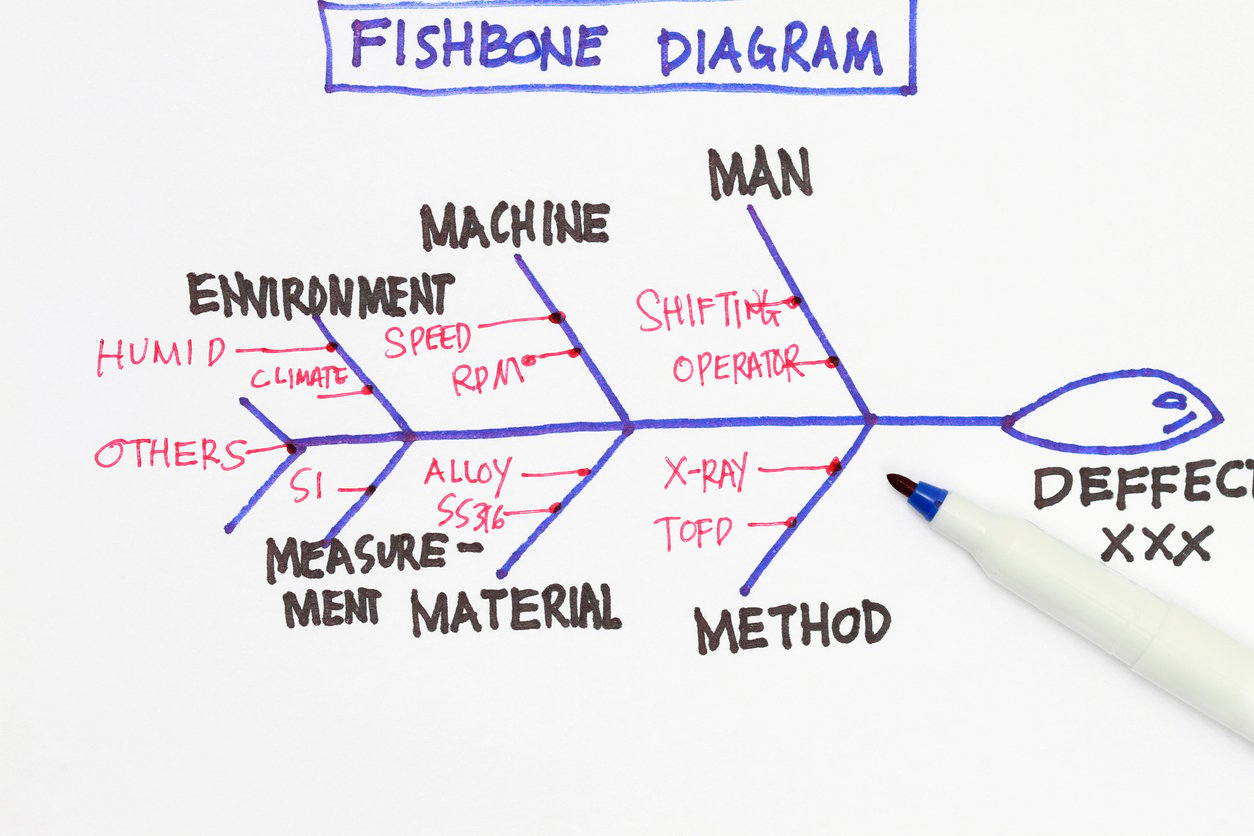What is a Fishbone Diagram in project management?
What is the purpose of a Fishbone diagram?
Named for its fish-like appearance, the Fishbone diagram is a problem-solving technique designed to help arrive at the root cause of an issue. Using a Fishbone project management diagram, you can analyze even the most complex projects and isolate any factors that contributed to process breakdowns.
Think of it this way. While some projects can be straightforward with very few tasks and phases, other projects can be complex, with many moving parts.
In a simple project, finding the cause of a problem may not require deep analysis. Perhaps a breakdown in machinery or personnel issues caused the project to derail. In a complex project, any number of complications might have occurred at any point, making it difficult to isolate and address the problem without cause and effect analysis.
How to use a Fishbone diagram from project management
A Fishbone diagram for project management is an efficient way to brainstorm in a complex environment. To identify cause and effect, project activities are sorted into categories that may vary depending on the type of Fishbone diagram or the type of project.
Generally, however, the “head” of the diagram represents the problem that needs to be solved, while the rest of the body represents the project components and areas that require deeper inspection. On each branch of the diagram, the category and various conditions are listed. This makes it easier to identify inefficiencies and other roadblocks. Avoid going down the rabbit hole, though.
An issue may have a few potential causes, so resist the urge to get bogged down in the minutiae of irrelevant, day-to-day errors. For example, an employee clocking in late one time is unlikely to be the reason that the project overran by $5,000.
What are the different types of Fishbone project management diagrams?
There are a few different types of Fishbone diagrams. This is because projects can have major differences in processes, complexities, and more. What works in a creative environment may not work in a manufacturing environment, for example.
Three common types of Fishbone diagrams are the Simple, 4S, and 5M/1E Fishbone diagrams.
Simple Fishbone diagram: A Simple Fishbone diagram does not have as many branches as the others. It also does not include pre-labeled categories. This means that a project manager can exercise a great deal of flexibility in identifying factors specific to their particular project phases and environment.
4S Fishbone diagram: The categories in a 4S Fishbone diagram are surroundings, suppliers, skills, and systems. Here you may be able to identify critical supply chain disruptions, skills shortages, or process shortfalls.
5M/1E Fishbone diagram: The categories in a 5M/1E Fishbone diagram stand for man, machine, method, material, measurement, and environment. This may be useful in a manufacturing environment as it includes material and machine categories.
Example of Fishbone diagram in project management - 5M/1E
Below is an example of a 5M/1E Fishbone diagram/template that includes the man, machine, method, material, measurement, and environment categories.
As your project team brainstorms based on the 5M/1E Fishbone diagram, they can identify suboptimal conditions like improper storage of materials, mishandling of products, inaccurate measurements, etc.

Tips for using a Fishbone diagram:
When using a Fishbone diagram, follow a few best practices to get the most out of them.
- Do not work in isolation. If your project team is fairly large, make sure to get input from team members who have experienced issues that you may not be aware of.
- Account for major changes in circumstances. For example, if problems began to arise after specific staff changes, do not neglect this fact. Investigate changes like these in your Fishbone diagram.
- Use the five “whys” method to help you arrive at the root cause of a problem. The five whys method essentially involves asking “why” five times to understand why a particular problem occurred. Once one question is answered, that response then becomes the basis of the next question. For example, the problem is that some of your inventory melted and was damaged overnight. To understand what caused this, you may need to ask “why wasn’t the temperature moderated in the stock room?” If the answer is because the thermostat was broken, your next question might be “why was the thermostat not working?” Asking these follow up questions should eventually lead you to the root cause of the main problem.
- Identify a specific problem. No need to try and solve 10 different issues at once. Focus your problem statement to make it easier to isolate and resolve specific process failures.

Artem Gurnov
Artem is a Director of Account Development at Wrike. He previously held the role of Project Manager, overseeing a team of customer success managers (CSMs). Over the years of building teams and scaling business processes, he has successfully deployed multiple projects, from automating client outreach to setting up work prioritization tools for sales reps and CSMs.

